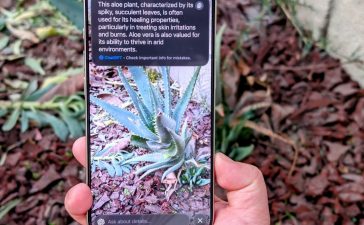Exclusive: Slow response times and high cost of parts make program unviable, third-party repairers say
Companies in Apple’s third-party repair program say delays in the process and high pricing for parts make it almost impossible to compete with the juggernaut.
In 2021 Apple, under pressure from a Productivity Commission review on the “right to repair”, launched its independent repair provider program in Australia. It was trumpeted as a way for small companies to compete with Apple to repair their products – such as the iPhone – using Apple tools and spare parts.
At the time, repairers said they felt the move was a token gesture designed to head off any potential right-to-repair legislation that would have been recommended by the Productivity Commission review.
Two years later, some say their fears have been realised. A number of repairers Guardian Australia has spoken to in Australia and the US suggest Apple’s slow response times and the high cost for replacement parts makes it almost impossible for them to be viable competitors.
The repairers requested anonymity to speak about the program, fearing that reprisals from the California-based tech giant might prevent them from remaining in the program.
Apple has indicated it takes an average of eight weeks for repairers to be admitted to the program, but repairers Guardian Australia has spoken to said the wait time can be up to six months – and that it feels like the applications sit in a black hole, without any point of contact within Apple to provide an update on their status.
Once repairers are admitted to the program, they receive training from Apple, as well as access to Apple parts, tools, repair manuals and diagnostic software for the company’s iPhones and Macs.
But they say the price of the parts, as well as the process to get a discounted rate for replacement parts, make it difficult for repairers to compete with Apple’s own repair program.
One repairer, who says his business repairs between 30 and 40 Apple products every week, said the average repair takes between an hour to an hour and a half. If it charge the rate Apple charges customers for repairs, then its maximum margin is about $60.
“After you take off labour and the rent, what is left? We are losing money.”
Apple’s independent repair portal works by either charging repairers a discounted price for the replacement part for an Apple product, provided the repairer has the faulty part with them and immediately sends it back to Apple; or by charging in full for the part and applying a credit for the discount to the repairer’s account once the part is received at a later date.
Repairers often choose to stock up on products such as screens and batteries in advance so repairs can be turned around more quickly for customers, but they said the crediting process was slow.
One repairer Guardian Australia spoke to said Apple had not processed about 80 credits since June and that the delay made it less viable to order parts upfront. He said it was also difficult to ever speak to anyone at Apple.
“The main problem with Apple is they don’t even give customer service,” he said. “They have a portal you can ask questions [in a search prompt] and it will just take you to an article.”
Apple declined to comment on the record about the program.
It is understood 150 repairers have been inducted into the program in Australia in the past two years.
As Australia faces a cost-of-living crisis, the ability for people to repair their existing devices in a timely and affordable manner is crucial, the chief executive of the Australian Communications Consumer Action Network, Andrew Williams, said.
“If you can’t repair your phone in an affordable way or your device in an affordable manner, then that’s a serious impediment to being able to actually engage in so many services, now the government and private entities are pushing so many services online,” he said.
“If you don’t have a usable device, or if you break your phone or your tablet and then you’ve got to go spend $2,000 to get another one – then that’s a major issue.”
The Productivity Commission’s report in October 2021 stopped short of recommending full right-to-repair legislation but made a number of suggested changes to Australian consumer law to allow people to use devices long past their warranties.
Williams said the Australian Communications Consumer Action Network would support a legislated right-to-repair.
The commission’s report was handed to the former Morrison government, which did not respond to its recommendations before the May 2022 election.
The Albanese government’s assistant minister for competition, Andrew Leigh, was approached for comment.
{{topLeft}}
{{bottomLeft}}
{{topRight}}
{{bottomRight}}
{{/ticker}}
{{heading}}
{{#paragraphs}}
{{.}}
{{/paragraphs}}{{highlightedText}}
{{#choiceCards}}{{/choiceCards}}







